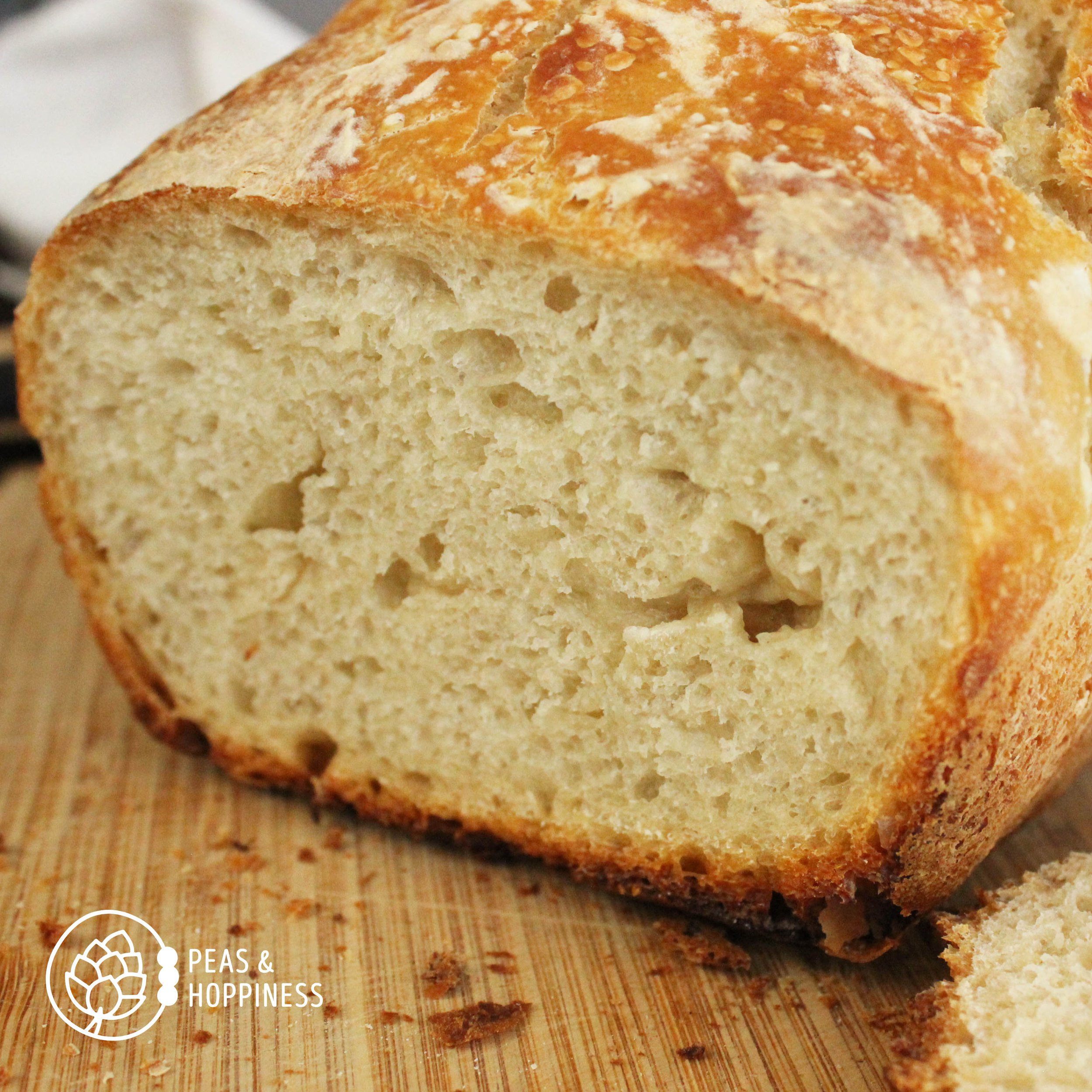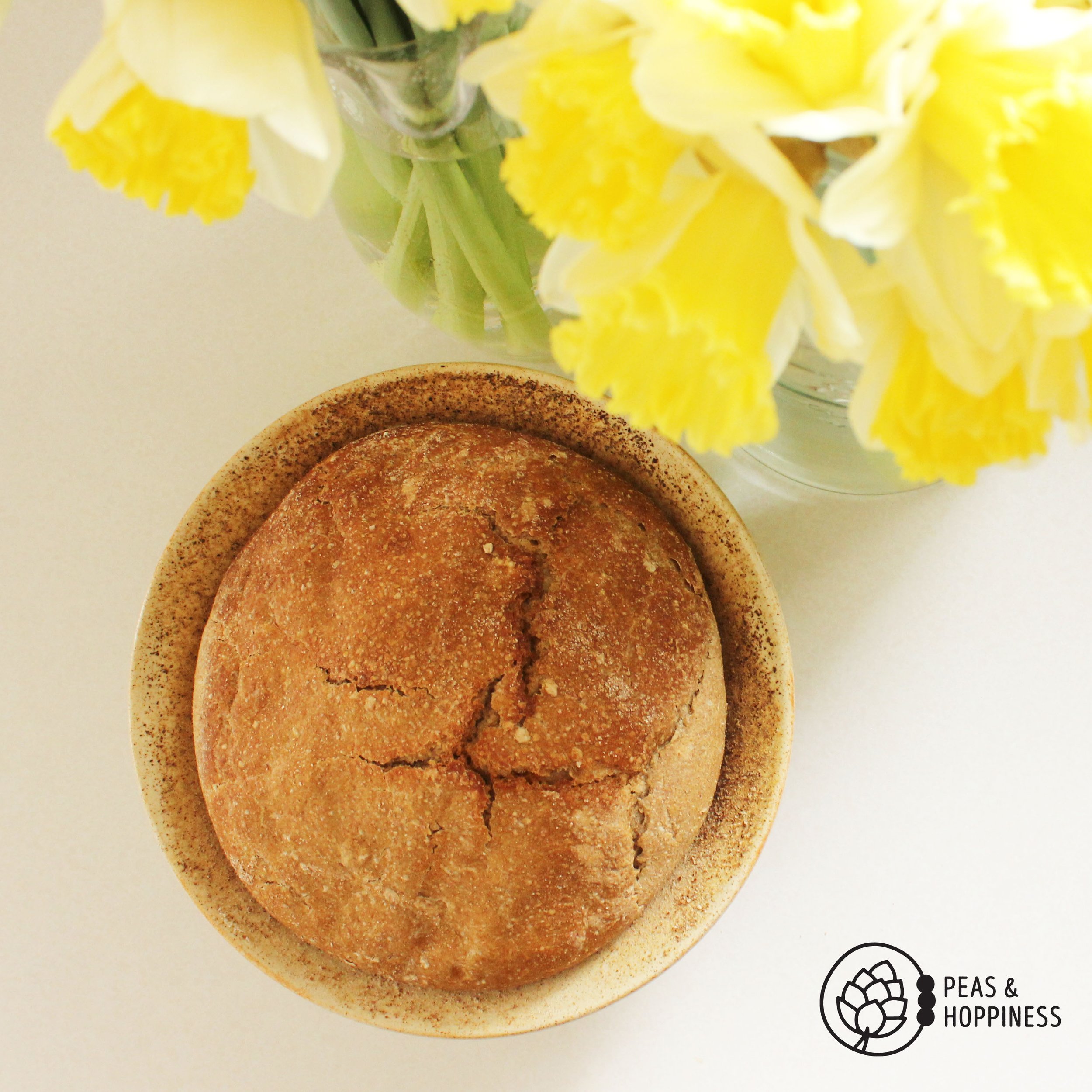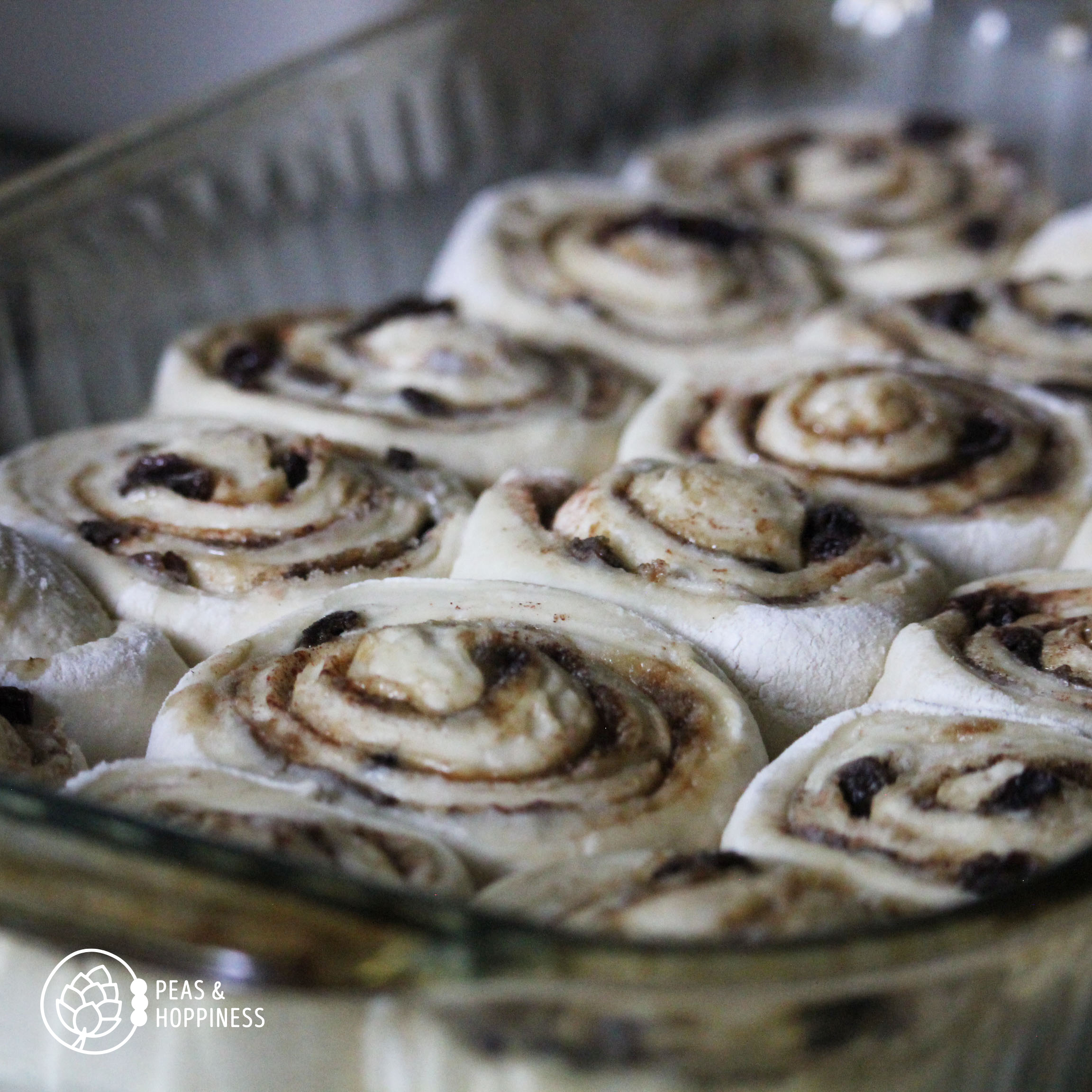Originally published 11/5/2017. Updated 2/1/2024. Pin this post or share with a friend!
Should you eat gluten-free? Learn about Celiac Disease, Non-Celiac Gluten Sensitivity, Wheat Allergy, and the gluten-free diet.
The gluten-free diet has become a popular trend in the last decade. Gluten has been pointed to as the cause of all sorts of health issues, from digestive issues to struggles with weight.
But what is gluten? Should you avoid it? How do you know if you should follow a gluten-free diet?
Learn more about Celiac Disease, Non-Celiac Gluten Sensitivity, Wheat Allergy, and the Gluten-Free diet.
What is Gluten?
 Gluten is a protein. It’s made up of two components: glutenin and gliadin. It’s found in wheat, barley, and rye.
Gluten is a protein. It’s made up of two components: glutenin and gliadin. It’s found in wheat, barley, and rye.
Different varieties of wheat contain different amounts of gluten. Some wheat varieties, like durum, are higher in gluten which makes them ideal for use in bread and pasta. Other varieties with low protein (low gluten) content grind into flour which is better used for cakes and pastries.
Recently some ancient grains such as Kamut and spelt, among others, have been popularized for their relatively lower gluten content. However, these grains are both relatives of wheat and do contain gluten. Someone who requires a strict gluten-free diet, such as someone with Celiac disease, needs to avoid these ancient grains, as well.
Note: there is no commercially available genetically modified (GM) wheat (source).
How Gluten Works in Baking
 Gluten is an incredibly unique substance. Anyone who’s tried to replicate its qualities in gluten-free products understands how hard it is to make something without gluten that is simultaneously sticky, stretchy, strong, and soft.
Gluten is an incredibly unique substance. Anyone who’s tried to replicate its qualities in gluten-free products understands how hard it is to make something without gluten that is simultaneously sticky, stretchy, strong, and soft.
In flour, glutenin and gliadin are found as separate proteins. Glutenin is sticky; gliadin is stretchy. Once mixed with water, the process of kneading dough helps gluten to form from its two components and become sticky, stretchy, and strong.
By the end of the kneading process the dough “bounces back” more than at first, which is evidence of gluten at work! Gluten’s texture allows yeast to produce air pockets, creating “gluten balloons” and causing bread to rise.
Celiac Disease
We can’t talk about gluten without talking about Celiac Disease.
What is Celiac Disease?
Celiac Disease is an autoimmune disease that affects about 1% of the population in the US. When somebody with Celiac Disease eats gluten, the body (inappropriately) mounts an immune response and (incorrectly) starts to attack the cells in the small intestine.
Over time, the damage to the small intestine can cause a wide variety of problems, including malnutrition, diarrhea, and gut microbiome dysbiosis. The general inflammation caused by untreated Celiac Disease can cause additional symptoms outside the gut as well, including join pain, fatigue, brain fog, and more.
Learn more about Celiac Disease from the Celiac Disease Foundation.
How Do Doctors Diagnose Celiac Disease?
There are several types of blood tests to screen for Celiac Disease. The most common first step in screening is to test for Tissue Transglutaminase IgA antibody (tTG-IgA) plus an IgA antibody. Click here to read more about the different types of blood tests and screening options.
To diagnose Celiac Disease, the gold standard test is a small bowel biopsy done using an endoscopy as an outpatient procedure. While slightly more invasive, a doctor is able to take a sample of the intestine to see if damage has occurred.
How Do You Treat Celiac Disease?
Currently the only treatment for Celiac Disease is strict adherence to a completely gluten-free diet. As little as 10 mg of gluten per day can trigger the autoimmune response in some people with Celiac disease (source). An eighth of a teaspoon of flour contains about 10 mg of gluten (source).
People with Celiac Disease must strictly avoid all gluten-containing foods AND avoid cross-contamination with gluten.
Don’t share toasters, wash pans thoroughly before switching to gluten-free cooking, and avoid sharing utensils that have been used with foods containing gluten. Also avoid using cooking utensils made with porous materials like wood or cast iron, which can be hard to clean thoroughly and may trap small gluten particles.
While there are studies researching treatments like enzymes to digest gluten, none of these are commercially available yet. Because Celiac Disease isn’t an allergy, epinephrine will not stop the immune response.
Non-Celiac Gluten Sensitivity
If you’ve been tested for Celiac Disease and the test came back negative, but you’re still experience symptoms when you eat foods containing gluten, you might have Non-Celiac Gluten Sensitivity.
What is Non-Celiac Gluten Sensitivity?
Non-Celiac Gluten Sensitivity affects about 1-2% of the population in North America. Gluten sensitivity is often colloquially called “gluten intolerance.”
It’s a different type of immune response than Celiac Disease. It was previously thought that people with gluten sensitivity only experienced symptoms without having the damage to the gut like in Celiac Disease. However, in 2016 a research study was published showing that people with gluten sensitivity have a immune reaction causing intestinal cell damage (source).
How Do Doctors Diagnose Non-Celiac Gluten Sensitivity?
 Currently Non-Celiac Gluten Sensitivity is most often diagnosed by ruling out Celiac Disease and a Wheat Allergy, then doing a gluten challenge. To do this, a person removes gluten from the diet for several weeks and then reintroduces a small amount. If symptoms recur, it means a person has a Gluten Sensitivity.
Currently Non-Celiac Gluten Sensitivity is most often diagnosed by ruling out Celiac Disease and a Wheat Allergy, then doing a gluten challenge. To do this, a person removes gluten from the diet for several weeks and then reintroduces a small amount. If symptoms recur, it means a person has a Gluten Sensitivity.
Some studies are looking into diagnosing gluten sensitivity by looking at subclasses of IgG antibodies (source). There are many other tests using saliva, blood, and stool samples which claim they test for gluten sensitivity but have not been validated and thus are not recommended (source).
How Do You Treat Non-Celiac Gluten Sensitivity?
As with Celiac Disease, people with gluten sensitivity need to follow a gluten-free diet. They may be able to tolerate cross-contamination or small amounts of gluten more than a person with Celiac Disease.
It’s unclear the threshold at which damage is caused to the small intestine in Non-Celiac Gluten Sensitivity, so it’s best to avoid gluten if possible.
Some people with gluten sensitivity and Irritable Bowel Syndrome also improve when eliminating Fructans (such as with a low FODMAP diet) or amylase-trypsin inhibitors. It can be hard to tell which of these may be triggering the symptoms, because all three of these (gluten, fructans, and amylase-trypsin inhibitors) are all found in wheat, barley, and rye (source).
Wheat Allergy
Although there is no such thing as a gluten allergy, some people do have a wheat allergy.
What is a Wheat Allergy?
A wheat allergy is a different immune response than Celiac disease. When someone with a wheat allergy ingests wheat protein, they create an IgE immune response.
As with other allergies, the symptoms appear within 30 minutes of ingesting wheat. Up to 1% of children in the US have a wheat allergy, but most of them outgrow the allergy by age 12 (source).
How Do Doctors Diagnose a Wheat Allergy?
Symptoms of a wheat allergy can include hives, trouble breathing, itching, vomiting, runny nose, headache, anaphylaxis, or more (find a full list here). The symptoms begin to emerge very quickly, within 30 minutes of ingesting wheat.
Usually an allergist will administer a skin-prick test to diagnose the allergy. A small amount of the wheat protein is placed on the skin and then pricked with a sharp sterile pin. The allergist measures the size of the reaction to determine the result.
Sometimes doctors also use a blood test to check for IgE antibodies. Note that these are different than the antibodies present in Celiac Disease.
In rare cases an oral food challenge can be used to diagnose a wheat allergy if the other two tests are not definitive. Click here to read more about diagnosing a wheat allergy.
How Do you Treat a Wheat Allergy?
Unlike Celiac Disease or Gluten Sensitivity, a person with a wheat allergy can tolerate barley and rye. A wheat allergy is NOT a gluten allergy; there isn’t such thing as a gluten allergy.
If someone with a wheat allergy ingests wheat, the immune response can be stopped using epinephrine. Administering an EpiPen should stop the reaction immediately. If it doesn’t, a second dose may be needed.
Most allergists recommend going to the emergency room as soon as epinephrine is given in case the reaction continues to worsen.
Should You Follow a Gluten-Free Diet?
If you have Celiac Disease or Non-Celiac Gluten Sensitivity, the answer is yes – you should absolutely remove gluten from your diet. For a wheat allergy, a person only needs to remove wheat. Barley and rye are usually safe to include.
In general, gluten is simply a protein and there is no reason to remove it from your diet. If you are unsure if you have one of these gluten-related diseases, talk with your doctor or find a dietitian near you who specializes in Celiac Disease. They’ll be able to walk you through the diagnosis steps to ensure you’re getting the right treatment.
Does a Gluten-Free Diet Help with Weight Loss?
 The short answer is no – gluten has nothing do to with whether you lose or gain weight unless you have an untreated disease like Celiac.
The short answer is no – gluten has nothing do to with whether you lose or gain weight unless you have an untreated disease like Celiac.
This may be shocking if you’ve followed celebrities or know someone who has lost weight after going gluten-free. It’s true that some people who follow a strict gluten-free diet will lose weight – at least at first. But it usually has nothing to do with gluten itself and everything to do with the fact that when you cut out gluten, you eliminate a lot of calorie sources: bread, pasta, crackers, cookies, cake, and most processed food.
If you’re gluten-free you don’t eat the donuts your co-worker brought into the office or munch mindlessly on the pretzels while watching the game. You can’t drink Bud Light with your buddies or swing through the McDonald’s drive through because everything in that place is contaminated with gluten.
For many people going “gluten-free” makes them more mindful of their eating habits, thus helping them cut back on overall calories and lose weight.
However, if one simply replaces regular brownies for gluten-free brownies, this effect is lost. Gluten-free flours and baking mixes are often less nutritious than their wheat flour alternatives. While most refined grains are required to have nutrients added back into them, gluten-free products are not. Gluten-free flours tend to be ultra-refined and if not careful to balance one’s diet, a gluten-free diet can be deficient in zinc, iron, and some B vitamins.
How Do I Start a Gluten-Free Diet?
If you need to follow a gluten-free diet, it can feel overwhelming to know how to begin. The Peas and Hoppy Meal Guides app can help answer the day-to-day question of “What’s for dinner that’s gluten-free?”
In the app you’ll receive a new menu every week with fresh ideas for breakfast, lunch, dinner, and snacks. All the recipes easily fit a gluten-free lifestyle and instructions for modifications are included each week.
You don’t have to change your entire lifestyle or buy only specialty foods! Our recipes use easy-to-find ingredients and substitution instructions for possible gluten-containing foods you might not think of (like oats!).
Click here to start a free trial of the app. After your trial, the app is just $14.99/month! You’ll receive access to all 800+ recipes and get a customizable grocery list with your weekly menu.
It’s totally possible to live gluten-free and enjoy a life full of good food.
In gluten-free health,
Dietitian Ann
Gluten-Free Living Made Easier
Enjoy a variety of foods and honor your body’s needs with over 750+ gluten-free recipe options in the Peas and Hoppy Meal Guides app!
The weekly menu is easy to modify for a gluten-free lifestyle. Recipes use easy-to-find ingredients and the made-for-you grocery list will save you tons of time.
“The Meal Guides have made my meal planning easier, more structured, and decreased the stress of spending time in the kitchen or not knowing what to cook.”
-Megan Williams, Peas & Hoppy Meal Guides App User



2 thoughts on “Celiac Disease, Gluten Sensitivity, or Wheat Allergy? The Gluten-Free Diet”
I love the way you educate and entertain! I’m thankful to have this reference to share with clients and friends who are confused on this subject!
This clears up a lot! Thanks!